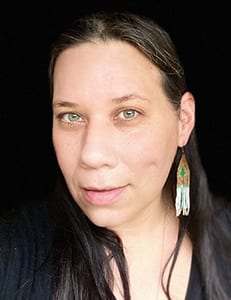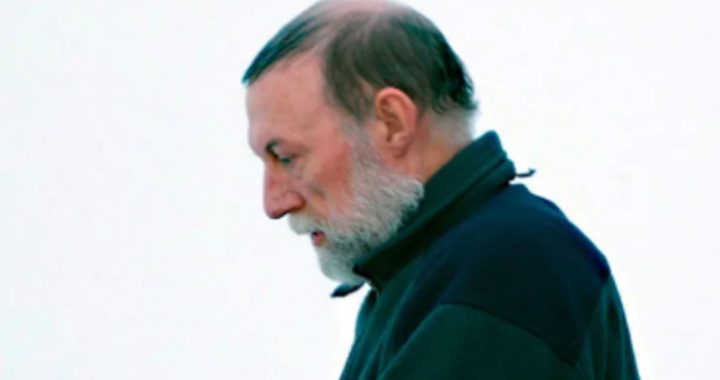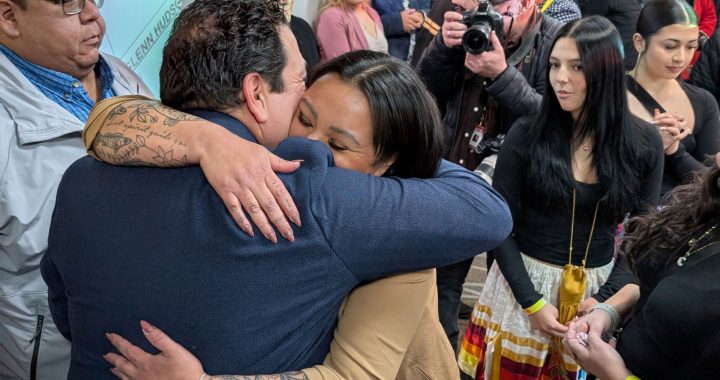
Lil' Red Dress volunteers near where Elizabeth Lagis was found, Old Island Highway. Photo Credit: Kara Alyssa Creative.
As people scroll their Facebook and Instagram feeds today they may see an ad about a missing person, Raymona Peter.
Peter went missing on Sept. 30 from Sooke, BC, in the middle of a week of red dress awareness campaigns.
From Sept. 28 to Oct 4, people in the K’omoks Valley were asked to display red dresses on their porches or in their windows to honour missing and murdered Indigenous women and girls (MMWIG).
The week culminated on Oct. 4, which is the national day of action for MMIWG.
According to the RCMP, Peter was last seen at 10:00 a.m., walking west from the Sc’ianew First Nation in the Beecher Bay area of East Sooke.

The ad campaign is being funded by the Lil’ Red Dress Project, a volunteer-run organization that creates beaded earrings and pins in the shape of red dresses to raise money to support MMIWG.
They use the money from the sales to create awareness about people who are missing online and through signs and billboards, mostly on Vancouver Island.
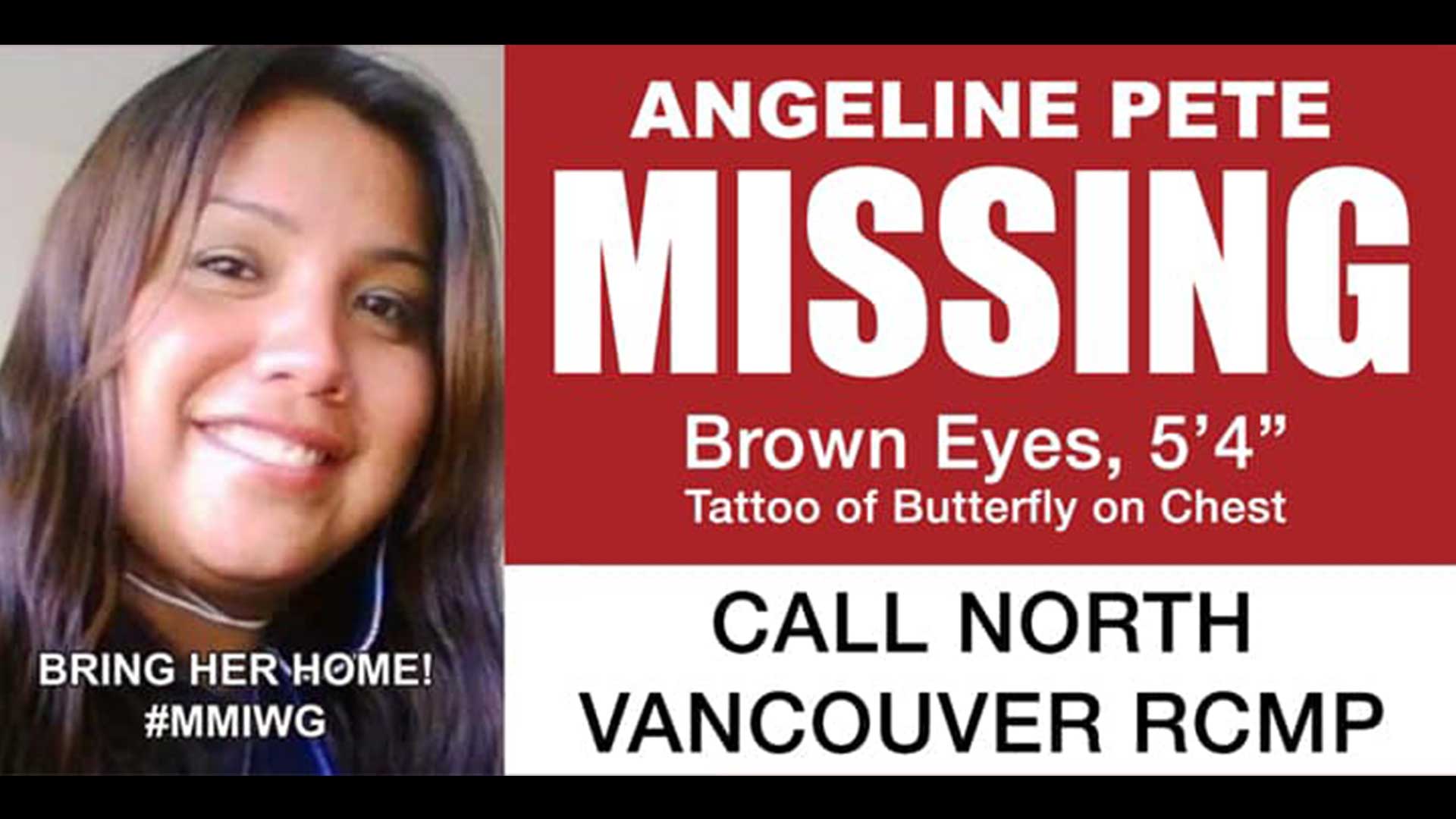
On Oct. 5, as they were launching their latest campaign, Rachel Blaney, the member of parliament for North Island – Powell River, stood in the House of Commons and questioned the government’s lack of a plan to stem violence against Indigenous women.
“Indigenous women in my riding, frustrated by the inaction of this government started the Lil’ Red Dress Project,” said Blaney. “What will it take for this government to move past empty words and actually work to save lives of Indigenous women and girls in this country,” she asked.
The federal government missed its self imposed deadline of June 3, 2020, a year to the day the inquiry released its 231 calls to justice in the final report, blaming the pandemic for the delay.
In response to Blaney’s question, Carolyn Bennett, minister of Crown-Indigenous Relations said the government is working on a plan.
“Our government is determined to work with all provinces and territories in responding to the first ever national inquiry, to ensure the families can seek justice and receive support, and that we will put in the concrete actions to stop this national tragedy,” she said.
How this came to be
The Lil’ Red Dress Project was created around this time two years ago.
Aaabawasige Jeannine Lindsay and Carla Maxmuwidzumga Voyageur were talking about the annual Sisters in Spirit Vigil traditionally held on Oct. 4, asking themselves what they could do to support the cause.
“We were talking about like, ‘could we wear red every day?’ Or, you know, we’re just trying to figure out ways we can be more visible in terms of supporting that campaign,” says Voyageur. “And then kind of inspired by the boost, we were like, ‘oh, we should bead a little red dress.’”
Both avid beaders, Lindsay and Voyageur made their first beaded little red dresses, took a picture of them and then posted on social media.
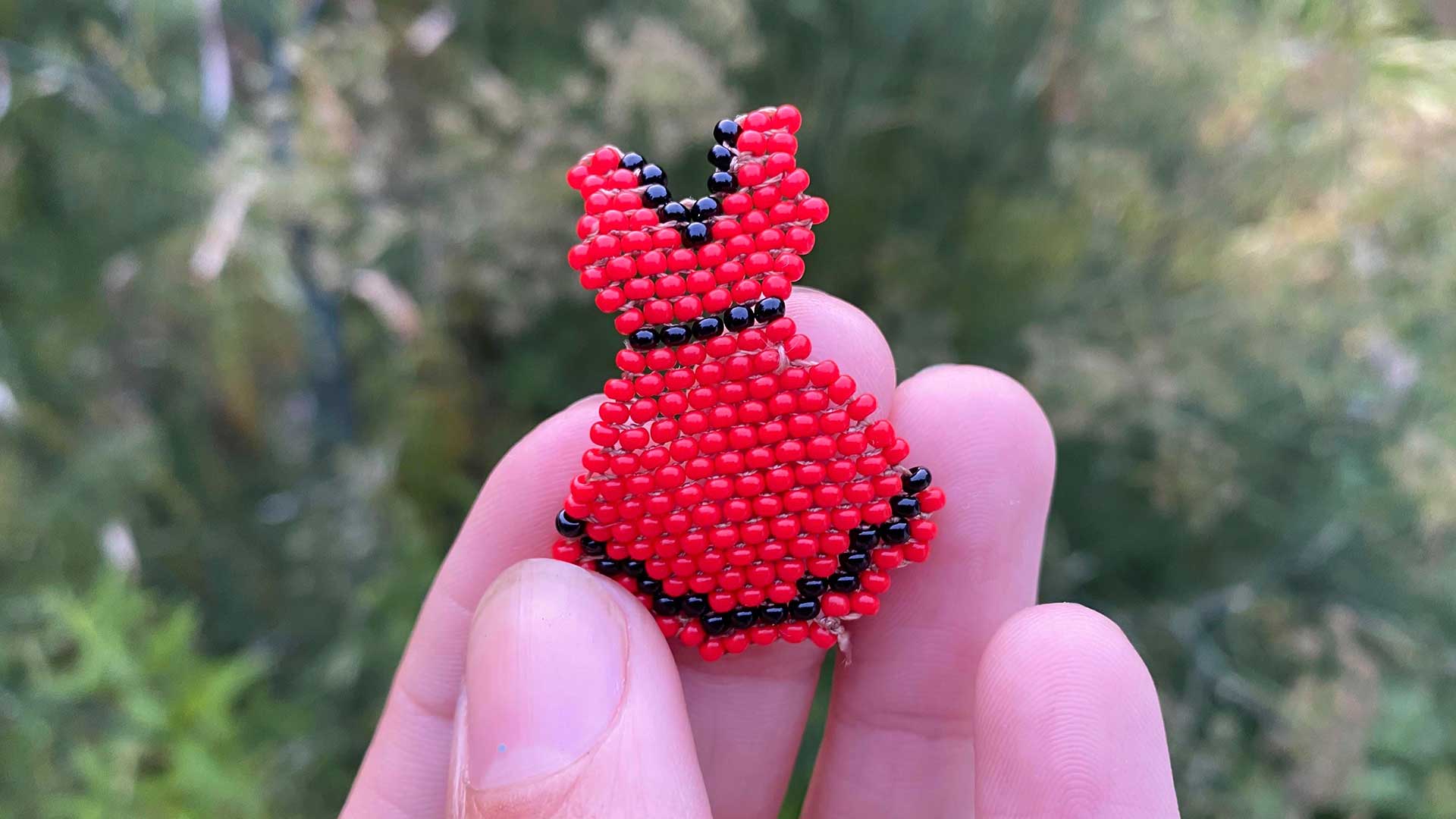
“Two days later we had to create a Facebook page because we were getting so many inquiries in our own personal inboxes that we were just inundated,” says Voyageur.
With such immediate demand, the two made a quick decision to put the money behind billboards.
They were inspired by something they saw two years prior when the family of a young non-Indigenous girl purchased several billboards along the highway in the K’omoks Valley to bring more attention to the fact that she had been missing for several years.
“The conversation came up between us and a few of our close family and friends that not many Indigenous families we know would be able to afford to take on a campaign like that, or even be able to afford one billboard,” says Lindsay.
So in the fall of 2018, as orders started pouring in, the two needed to figure everything out: from where to get beads, to how much billboards cost, to who to feature in their first campaign.
“We had to go out and we had to do the work within the community,” says Voyageur. “We had to go and talk to families, and to the leadership. The majority of the first year and a half was like doing community work and building our team.”
In March of 2019, they launched their first campaign. Four billboards have been set up to date, to try to help families locate Angeline Pete and Lisa Young.
Young has been missing for 18 years, last seen in Nanaimo, British Columbia on June 30, 2002.
Pete has been missing for 9 years, last seen May 26th, 2011 in North Vancouver.
The billboards vary in cost depending on location. According to Lindsay, digital billboards on the mainland cost $7,000 per month. Static billboards on Vancouver Island cost about $2,000 per month.
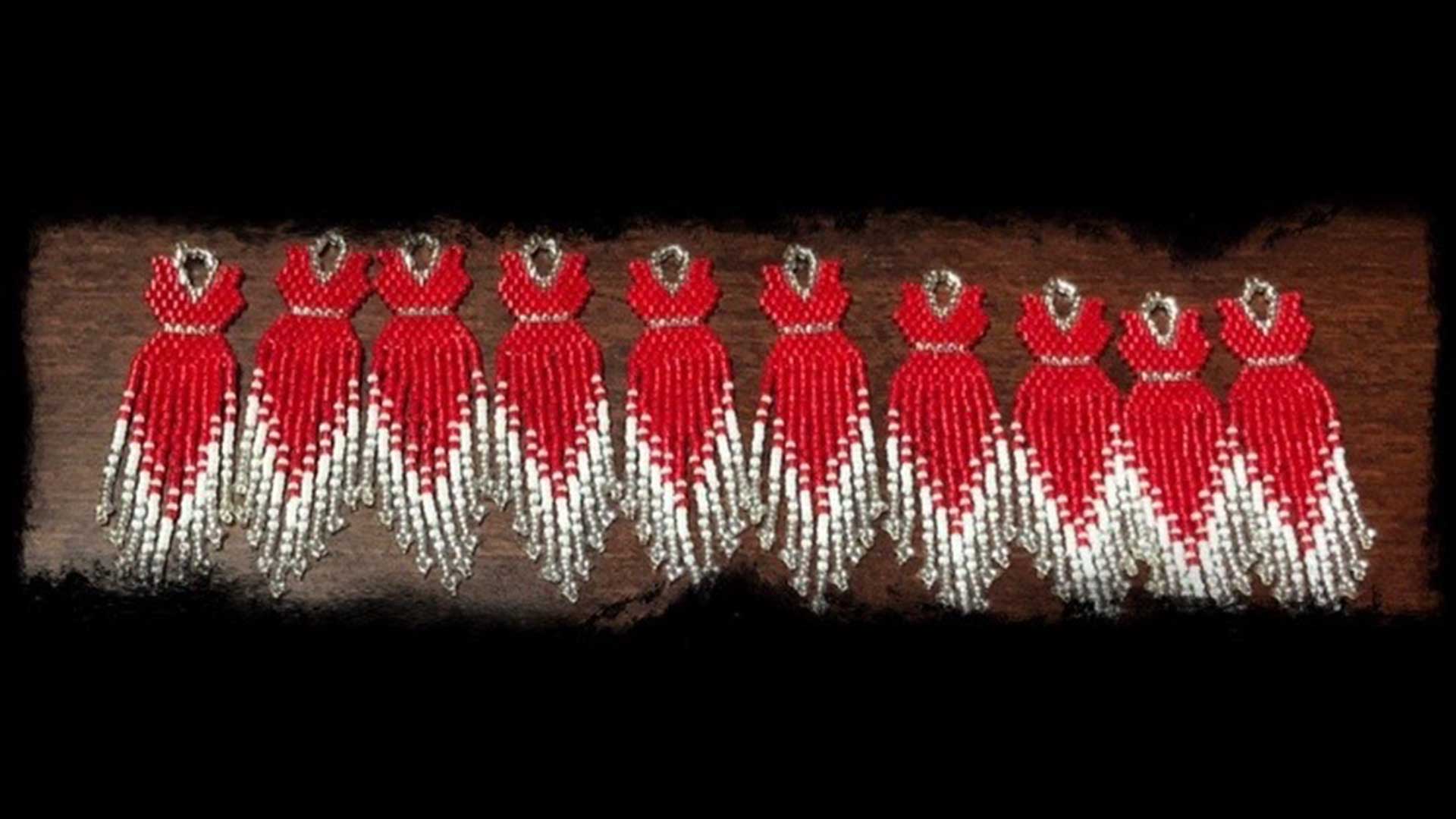
Growing
What started out as two friends being curious if they could bead a red dress pin has turned into much more than either of them expected.
Volunteer beaders now make earrings as well as pins. They’re now selling masks and they run workshops for people who want to learn to bead.
“One of our team members donated the earring pattern to us through Beading Through Time. So that was a big one for us to be able to expand with the earrings,” says Lindsay.
“We expanded threefold with the earrings,” Voyageur adds.
The workshops have helped build their team of volunteers.
“We started doing workshops in the valley, which kind of grew the basis of our team or volunteer team,” says Voyageur. “We didn’t realize how big and how quickly we would grow.”
But Voyageur and Lindsay have more in common than just beading, they are both mothers, active Indigenous community members, and educators.
Lindsay, who is Anishinaabe, Cree, Scottish and Irish, works as an Aboriginal Cultural Resource Aide at School District 73. Voyageur who is from the Musgamagw Dzawada’enuxw Nation and has Nisga’a roots teaches Kwak̓wala at North Island College.
The project has been a family affair.
“It started as our family, our poor husbands and children.” Lindsay laughs, “sleeping on beads and having beads stuck on their clothing.”
Three of Voyageur’s four daughters are involved in beading, and even seven-year-old Mackenzie has a role.
“Our youngest team member, she designs a vast majority of our pins…she’s been coloring and drawing, she’s kind of our creative guru when it comes to new patterns,” says Lindsay.
Both Lindsay and Voyageur are up front with their kids about MMIWG.
“I think I’m one of the odd balls in the world who just are very real with my children,” says Voyageur. “I know that there are a lot of people in the world that, you know, gently speak about it with their children, especially in schools, but in all honesty, as an Indigenous woman and Indigenous mother with Indigenous daughters, it’s a reality we face.”
For Lindsay, who has a thirteen-year-old son, the conversation is slightly different.
“The conversation is based around what would you do if you saw a young woman being harassed or followed,” she says. “It’s his responsibility as a young Indigenous man to make sure that he’s doing what he can to help protect and watch out for the woman and his family and the community.”
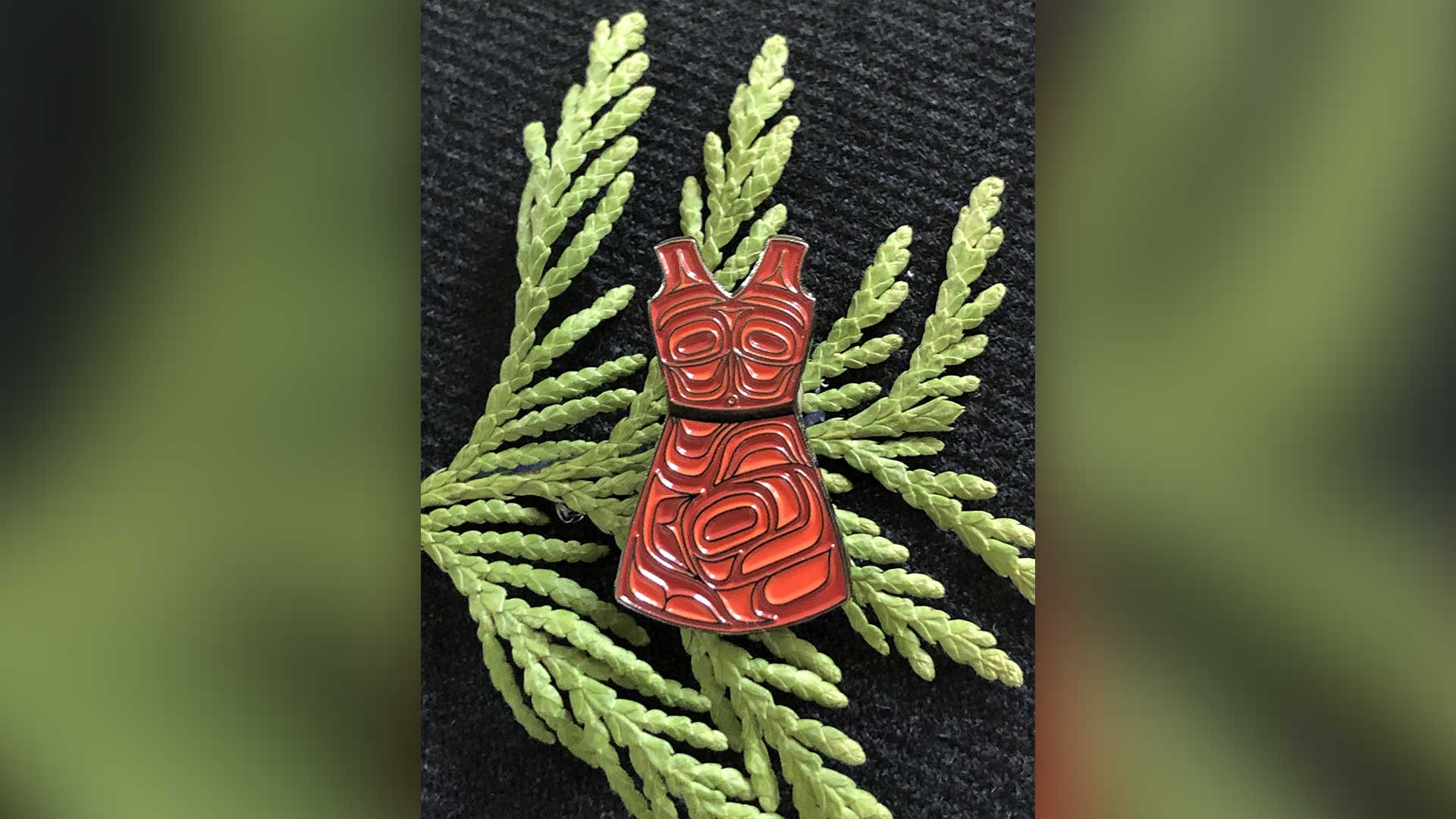
Moving forward
As they balance working, parenting and running the Lil’ Red Dress Project, the two women are proud of what they have done so far, but know there’s so much more work to be done.
“We know that we’re doing good work, but sometimes it feels like we wish we could do more,” says Lindsay, “There’s so much work that can be done. we’re hoping to inspire the people to start their own projects, bring more awareness campaigns and hopefully help bring more family members closure or answers.”
Voyageur says numbers of MMIWG on Vancouver Island are hard to track, due to inconsistency in RCMP intake and reporting.
This is in line with the findings of the national inquiry into MMIWG.
“We call on the federal government to amend data collection and intake-screening processes to gather distinction-based and intersectional data of Indigenous women and girls and 2SLGBTQQIA people,” the final report states.
For now they are focused on expanding the two campaigns that we had running for Angelina Pete and Lisa Marie Young, and turning those into digital campaigns.
“[Pete] actually went missing in North Vancouver. Ideally it’d be nice to run at least a month there and then run some digital campaigns for both of them,” says Voyageur.
At the same time they will continue to run the new campaign for Peter.
The families of the missing women and girls who have had billboards have let the project team know they are appreciated.
“We’ve had family members who are super grateful for what we’ve done for them,” says Voyageur.
There is a national, toll-free 24/7 crisis call line providing support for anyone who requires emotional assistance related to missing and murdered Indigenous women and girls. For support call: 1-844-413-6649.




